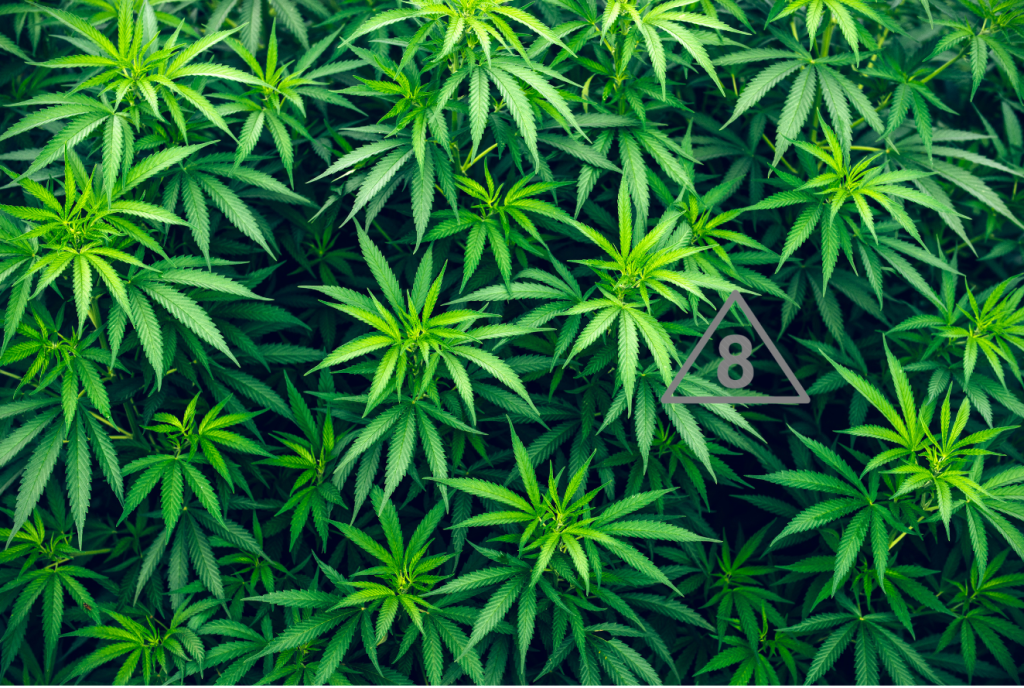What is Delta-8?
Delta-8 has recently grown in popularity and appears to be popping up at every gas station, smoke shop and convenience store, so what is this new product? To better understand Delta-8, we must first understand where it comes from. Many people have heard of CBD, one of the hundreds of chemical compounds found in cannabis. When people typically think of the “high” that comes from marijuana, they are thinking of the effects from Delta-9 THC, the main ingredient in marijuana that alters the mind. Delta-9 is found in large amounts of cannabis and is recognized as federally illegal. Both Delta-9 and Delta- 8 are forms of THC, but Delta- 8 is sometimes referred to as “marijuana-lite” or “diet weed,” because the effects are “supposedly not as potent.” With no FDA evaluation or approval however, there isn’t a “standard” for these products. In fact, the FDA has received numerous reports from consumers and law enforcement about bad events resulting from Delta-8 consumption. National poison control centers received 661 exposure cases of Delta-8 THC products between January 2018 and July 31, 2021.
Why is Delta-8 Dangerous?
Delta-8 THC has psychoactive and intoxicating effects, like Delta-9 THC, but the natural amount of Delta-8 found in hemp is very low. The low amount of naturally occurring Delta-8 means that additional chemicals are required in order to make it potent enough to produce a “high.” This is where the problems really begin. With no FDA standards, manufacturers may use unsafe household chemicals to make Delta-8. They may also use chemicals to change the color of the final product to make it appear more like “actual” marijuana. With unknown chemicals entering our bodies, the results can range from sickness to hospitalization.
How is Delta-8 Consumed?
Similar to traditional cannabis products, Delta-8 can be smoked in flower form, vaped in an oil form and consumed in an edible form. Each method of consumption comes with its own risks and problems. Smoking or vaping Delta- 8 can cause lung irritation, throat pain, nausea, anxiety, dry mouth and more. Vaping also brings the additional risk of burns depending on the rig used to vape. This brings us to the final method, edible Delta-8. Edible Delta-8 brings along all the risks the other forms do, but it can especially cause vomiting, dizziness and even hospitalization. The most dangerous part of the edible form of Delta-8 is the packaging used to sell it. Most of the products look very similar to their regular counterparts. With packages that look like snack bags, candy or normal food, this can be especially dangerous to children and even our pets. Spot the differences in the image down below!

The Bottom Line
Delta-8 is one of many mind-altering substances and while it is legal, it clearly is not safe. There is no data that shows any positive effects of this substance, and any reported are word of mouth or ways to advertise their products. The FDA has grown more concerned about Delta-8 due to the rise in adverse event reports, marketing that is appealing to children and concerns about the chemicals used during the manufacturing process. Delta-8 usage is a rising concern and the more we know, the better we can make informed decisions about being healthy. For more information on Delta-8 visit: insertlinkhere
Sources:
Commissioner, O. 5 things to know about delta-8 tetrahydrocannabinol – delta-8 THC. U.S. Food and Drug Administration. Retrieved January 20, 2022, from https://www.fda.gov/consumers/consumer-updates/5-things-know-about-delta-8-tetrahydrocannabinol-delta-8-thc
Sreenivas, S. (n.d.). What is delta 8? WebMD. Retrieved January 20, 2022, from https://www.webmd.com/mental-health/addiction/what-is-delta-8
What is delta-8? Cleveland Clinic. (2021, December 29). Retrieved January 20, 2022, from https://health.clevelandclinic.org/what-is-delta-8/
What is delta-8? Premier Biotech. (2021, September 27). Retrieved January 20, 2022, from https://premierbiotech.com/innovation/what-is-delta-8/




Comments are closed.